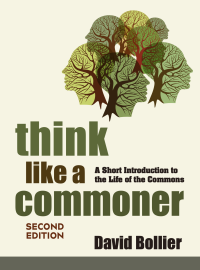The same process of online collaboration that gave us free and open source software — and later, Wikipedia, Flickr, Jamendo and the “folksonomy” tags for pools of content — is now moving slowly into the corporate world. The idea is often called “crowd-sourcing.” That’s the process by which thousands of people collectively participate in generating a shared body of knowledge — and then comment on and improve it. (Jeff Howe, who has written a book on the topic, hosted an open competition to crowd-source the cover for it. One example is the image here, by tsevis, who used a similar motif in making a “mosaic image” of Barack Obama.)
The corporate world has long been wary of the decentralized knowledge-generation of crowd-sourcing. It’s a novelty that most don’t fully understand, and it is difficult to integrate its results into centralized, hierarchical bureaucratic systems. Besides, executives say, How could a band of unknown volunteers possibly know more than our own set of credentialed experts? Then there is the issue of control. “Why should we let the crazies and great unwashed influence our decisions?” is the basic line of thinking.

This is starting to change, as John Hagel and John Seely Brown explain in their Business Week column (March 18). The U.S. Patent & Trademark office is now in the vanguard of adopting crowd-sourcing techniques to help it improve its review and approval process for new patent applications. After hosting a one-year test project called Peer-to-Patent, the U.S. PTO believes that crowd-sourcing has the potential to make the granting of new patents faster, cheaper and more reliable than the traditional system.
Currently, as Brown and Hagel explain, a patent examiner spends roughly 20 hours per patent application to determine whether to grant a twenty-year exclusive monopoly. It’s an important decisionmaking process that can determine who makes a fortune (or not), how competitive markets will be (or not), and how much money corporations and courts will spend on litigating the legality of patent determinations.
The process is now on the verge of a breakdown, however. Patent applications have doubled over the past ten years, and more than one million patent applications are now pending, with the backlog growing.
New York Law School professor Beth Noveck came up with the idea of using social software to invite people to comment on whether patent applicants should be entitled to a patent and to submit examples of “prior art” that might invalidate a patent. Prior art consists of existing inventions, research articles or public demonstrations that might call into question the originality of an invention for which a patent is sought. Considering the obscurity and complexity of some fields of invention, finding prior art is not always an easy job, especially for patent examiners struggling with huge backlogs of patent applications.
Peer-to-Patent helps address this problem by inviting volunteers to search for prior art for specific patent applications, and to submit it to the U.S. PTO. Volunteers can work individually, but the system also provides online workspaces so that ad hoc teams can organize themselves to discuss prior art and the quality of specific patent applications. In the style of Flickr, Peer-to-Patent lets users “tag” their works with self-created subject labels, which helps other people identify pending patent applications and comment upon them.
To date, the Peer-to-Patent project has attracted some 2,500 volunteers from 152 countries who have submitted prior art for 121 patent applications. It’s a modest first year, but it has shown great potential in identifying prior art and improving the quality of patent applications. About 25 percent of the patent actions made by the patent office during the first year of the program resulted in rejections of new patents. This is good: exclusive property rights in an invention should not be given out lightly.
Hagel and Brown write:
“Peer-to-Patent offers the potential to deliver stronger, more litigation-proof patents in shorter time and lower cost. By increasing transparency at the outset and surfacing potential issues regarding prior art earlier, this process can preempt very costly litigation down the road. In an important way, Peer-to-Patent becomes a powerful insurance program to mitigate risk of patent challenges.”
It’s quite likely that crowd-sourcing techniques could be used in many other institutions of government and the nonprofit sector. In fact, this is very likely one of the tasks that Professor Beth Noveck is now contemplating. President Obama has appointed her as Deputy Director of Open Government at the Office of Science and Technology Policy.
It will be difficult to integrate the open, flexible modes of participation of crowd-sourcing into bureaucracies immersed in a very different mindset. And there are some understandably messy complications in bringing traditional systems of law into alignment with open participation. But meeting this challenge is long overdue. Imagine how citizen confidence in the process and legitimacy of government would grow! I’m looking forward to Professor Noveck’s work in the Obama administration.











Recent comments